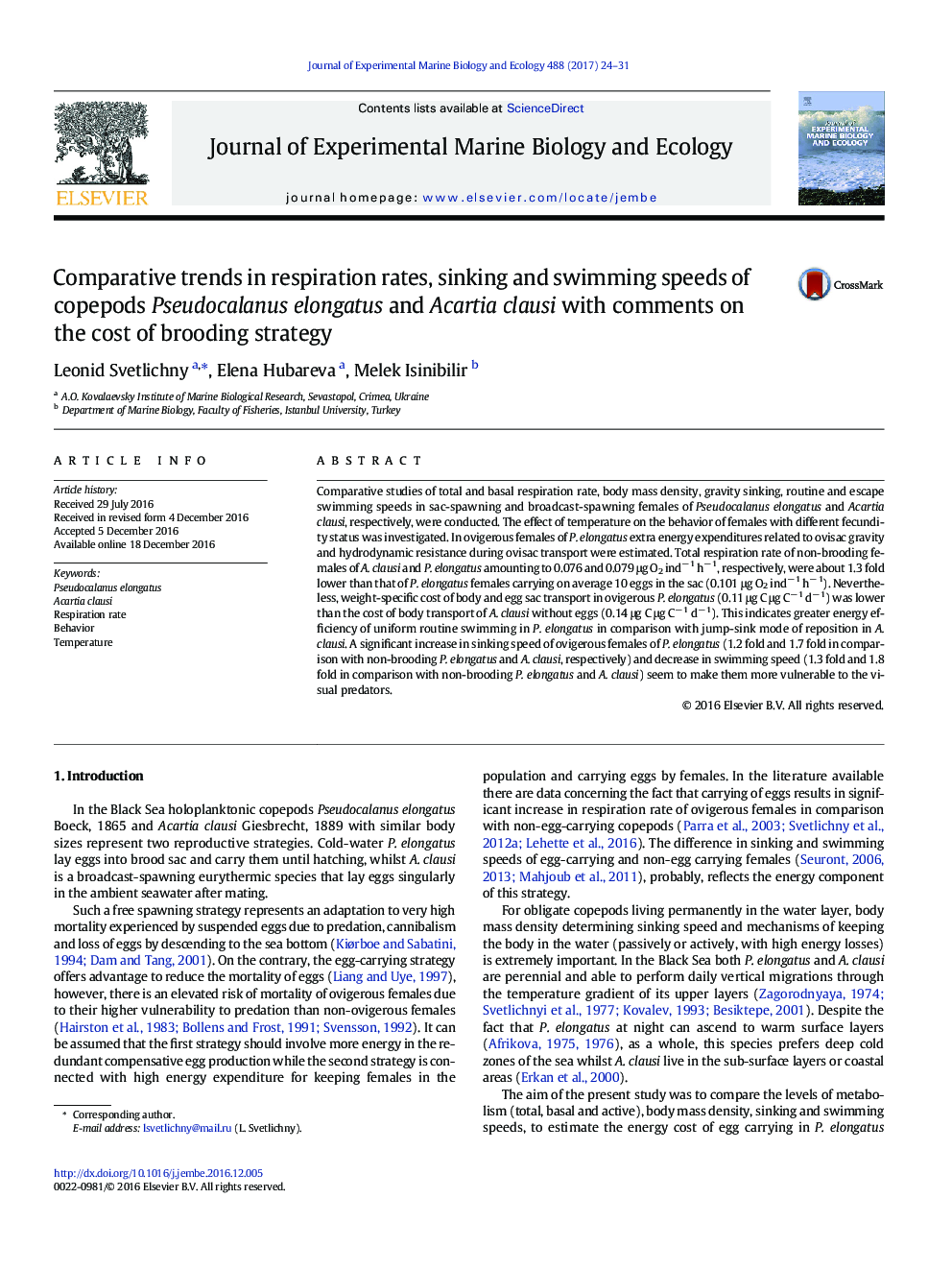| کد مقاله | کد نشریه | سال انتشار | مقاله انگلیسی | نسخه تمام متن |
|---|---|---|---|---|
| 5744559 | 1618387 | 2017 | 8 صفحه PDF | دانلود رایگان |

- Total and basal respiration rates, body mass density, gravity sinking and swimming speeds in broadcast-spawning females of Acartia clausi and egg-carring and non-egg-carrying females of Pseudocalanus elongatus have been compared.
- In egg-carrying females of P. elongatus respiration rate and sinking speed are higher, while active swimming speed is lower than that of non-egg-carrying females.
- Total respiration rate of egg-carrying females of P. elongatus is higher than that of A. clausi females, however, energy cost of swimming is lower than the cost of swimming in A. clausi.
Comparative studies of total and basal respiration rate, body mass density, gravity sinking, routine and escape swimming speeds in sac-spawning and broadcast-spawning females of Pseudocalanus elongatus and Acartia clausi, respectively, were conducted. The effect of temperature on the behavior of females with different fecundity status was investigated. In ovigerous females of P. elongatus extra energy expenditures related to ovisac gravity and hydrodynamic resistance during ovisac transport were estimated. Total respiration rate of non-brooding females of A. clausi and P. elongatus amounting to 0.076 and 0.079 μg O2 indâ 1 hâ 1, respectively, were about 1.3 fold lower than that of P. elongatus females carrying on average 10 eggs in the sac (0.101 μg O2 indâ 1 hâ 1). Nevertheless, weight-specific cost of body and egg sac transport in ovigerous P. elongatus (0.11 μg C μg Câ 1 dâ 1) was lower than the cost of body transport of A. clausi without eggs (0.14 μg C μg Câ 1 dâ 1). This indicates greater energy efficiency of uniform routine swimming in P. elongatus in comparison with jump-sink mode of reposition in A. clausi. A significant increase in sinking speed of ovigerous females of P. elongatus (1.2 fold and 1.7 fold in comparison with non-brooding P. elongatus and A. clausi, respectively) and decrease in swimming speed (1.3 fold and 1.8 fold in comparison with non-brooding P. elongatus and A. clausi) seem to make them more vulnerable to the visual predators.
Journal: Journal of Experimental Marine Biology and Ecology - Volume 488, March 2017, Pages 24-31